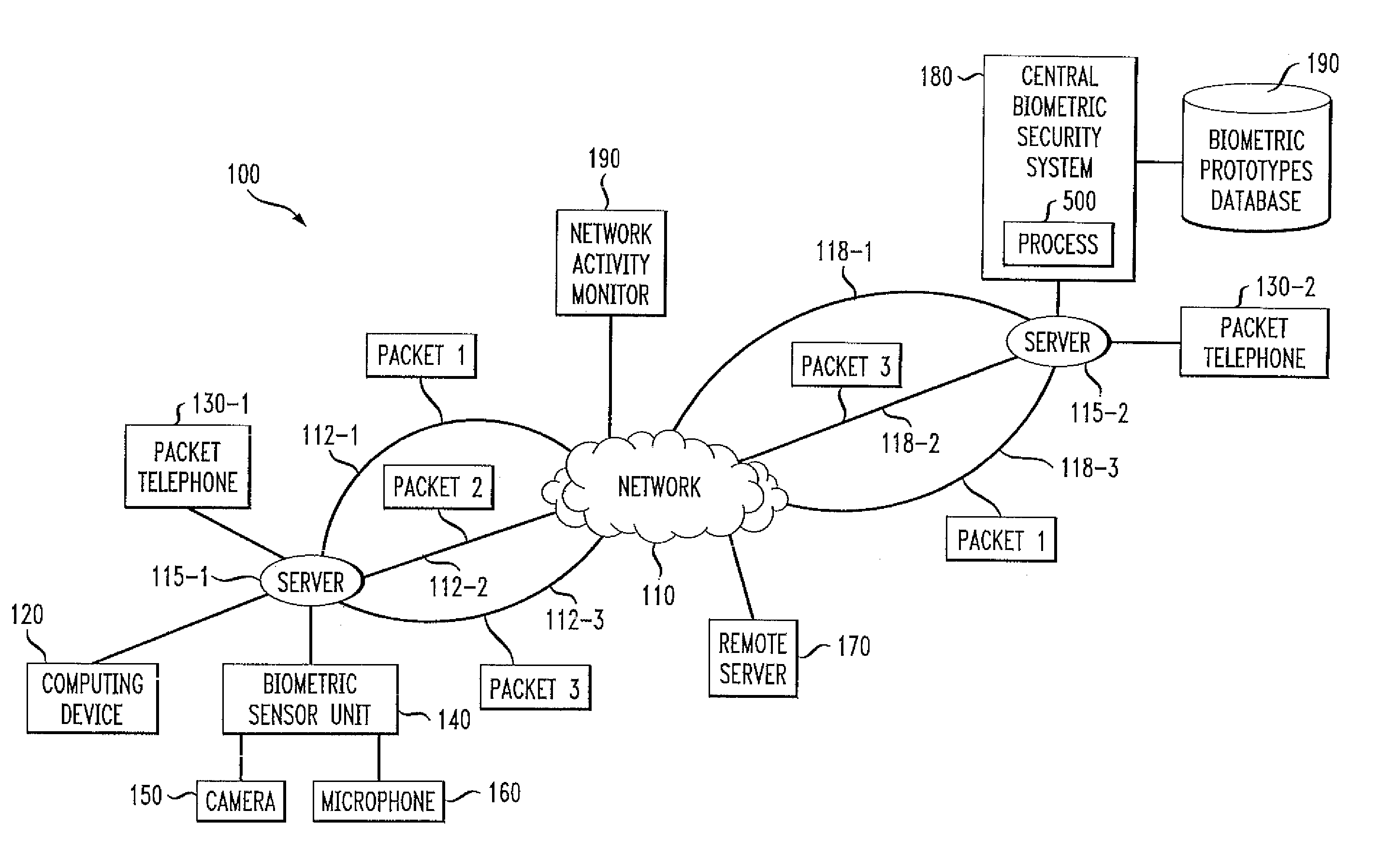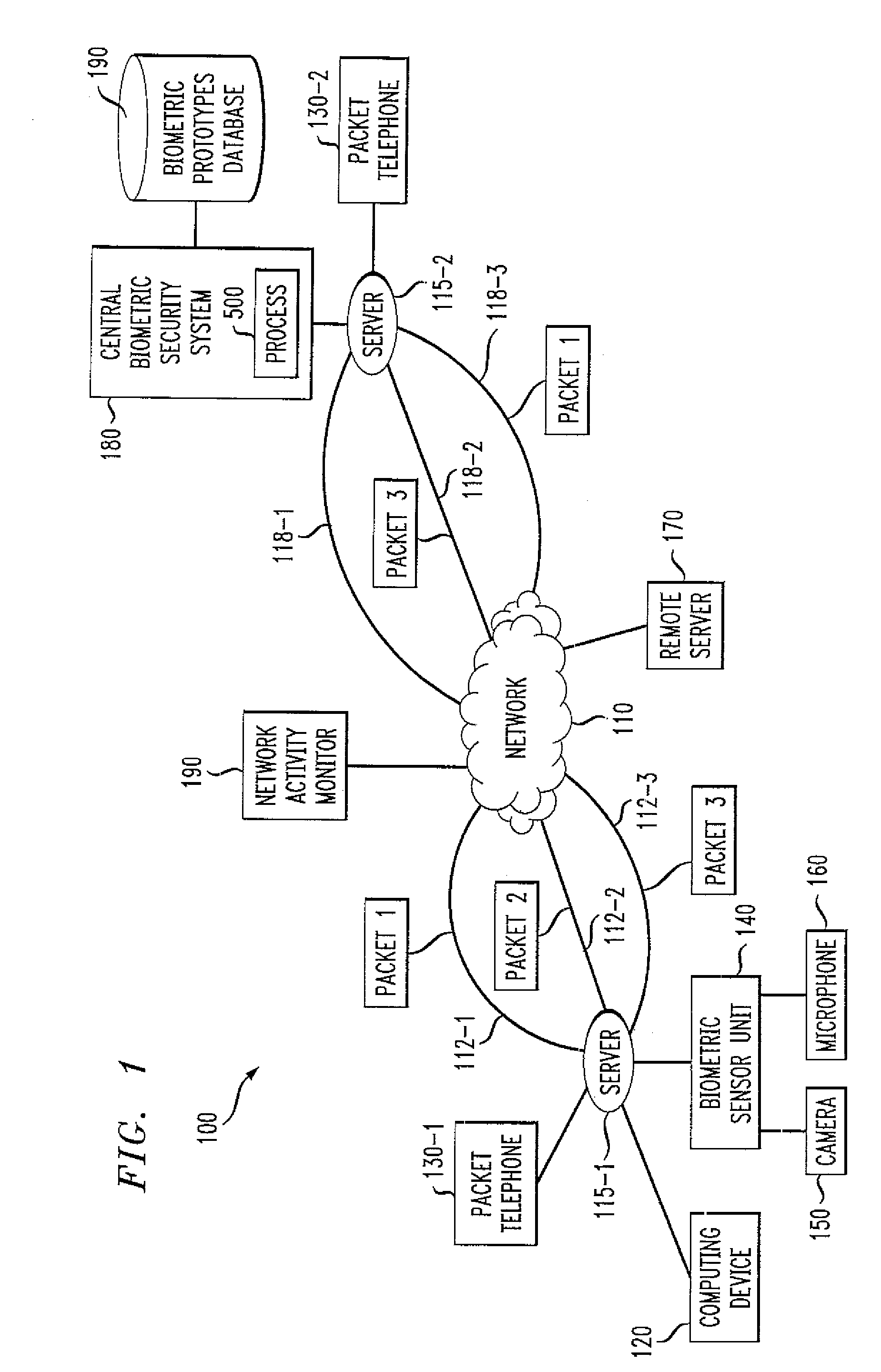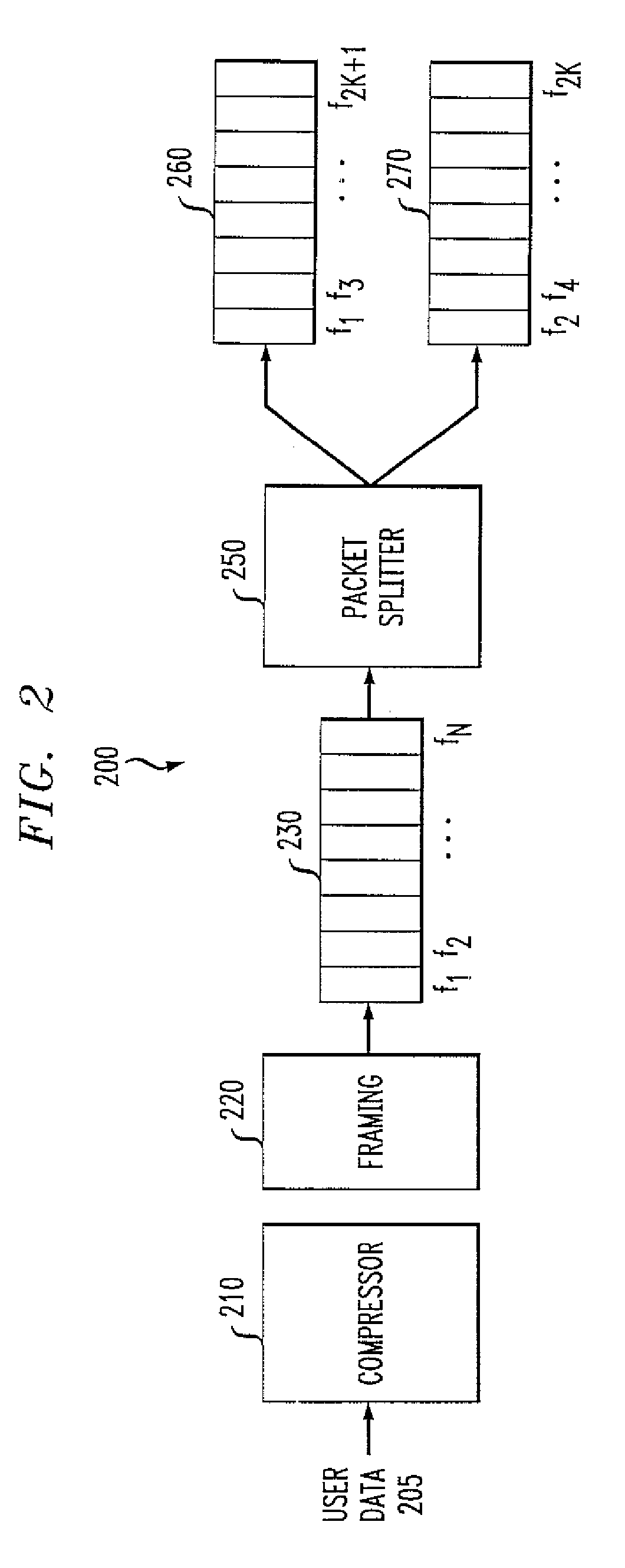Methods and Apparatus for Transmitting Data in a Packet Network
a packet network and data technology, applied in the field of packet transmission techniques, can solve the problems of individual packets being lost or delayed, and the udp protocol does not provide the service of dividing a message into packets,
- Summary
- Abstract
- Description
- Claims
- Application Information
AI Technical Summary
Benefits of technology
Problems solved by technology
Method used
Image
Examples
Embodiment Construction
[0024]FIG. 1 illustrates a network environment 100 in which the present invention can operate. According to one feature of the present invention, packets that are transmitted across the network 110 are split and interchanged, such that packets that reach their destination may be processed, even in the presence of lost or delayed packets. While the present invention may be applied to any information transmitted over a packet network, the invention is illustrated herein using Internet telephone and biometric data as examples.
[0025] In the case of biometric data, such as fingerprints, retinal scans or voice characteristics, the biometric data packets are split, and optionally interchanged prior to transmission. In this manner, if some of the packets are lost or delayed, while some of the packets reach their destination and provided sufficient data for user identification, then the user may be authenticated without requesting the retransmission of the lost or delayed data. The present ...
PUM
 Login to View More
Login to View More Abstract
Description
Claims
Application Information
 Login to View More
Login to View More - R&D
- Intellectual Property
- Life Sciences
- Materials
- Tech Scout
- Unparalleled Data Quality
- Higher Quality Content
- 60% Fewer Hallucinations
Browse by: Latest US Patents, China's latest patents, Technical Efficacy Thesaurus, Application Domain, Technology Topic, Popular Technical Reports.
© 2025 PatSnap. All rights reserved.Legal|Privacy policy|Modern Slavery Act Transparency Statement|Sitemap|About US| Contact US: help@patsnap.com



